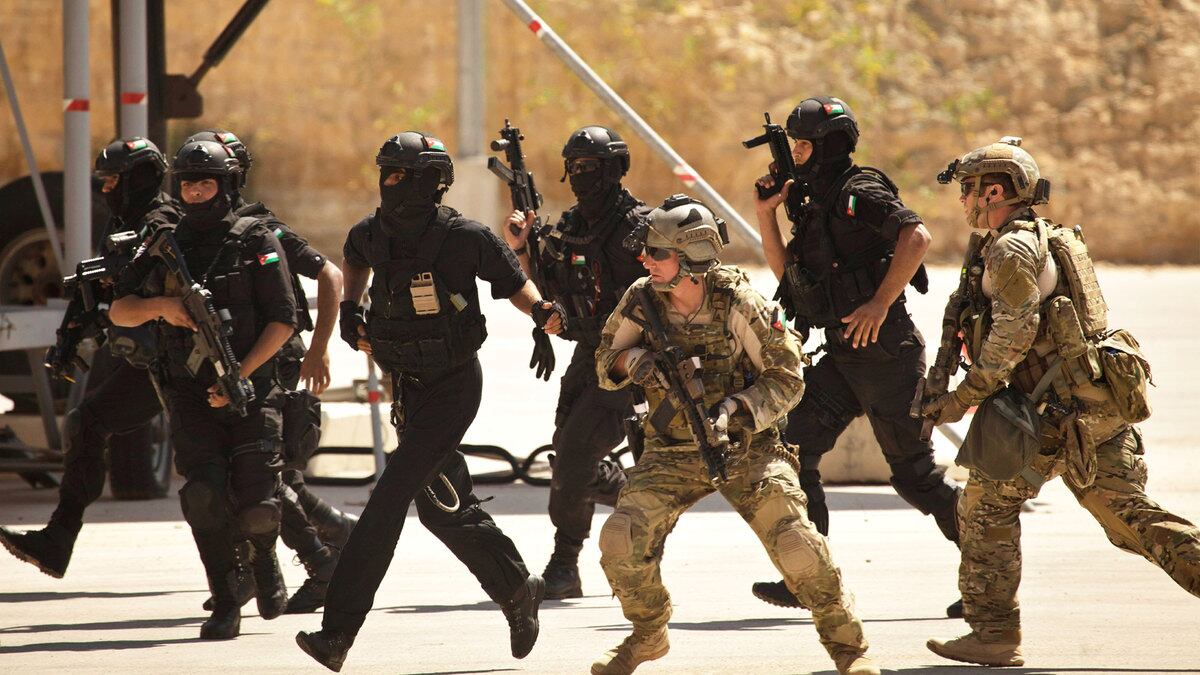President Donald Trump’s Iraq drawdown is for domestic political consumption and likely will not accurately represent the number of troops coming home, two administration officials tell The Daily Beast.
On Wednesday morning, the general in charge of U.S. forces in the Mideast and Central Asia, Gen. Kenneth “Frank” McKenzie, announced that U.S. troop levels in Iraq will drop by October to 3,000 from 5,200. A long-telegraphed decline in Afghanistan force levels is likely to follow before the election.
But a U.S. official with knowledge of Mideast operations told The Daily Beast that the figures were misleading, at best.
“It’s disingenuous,” this official said, and presented “for domestic consumption.” A second official echoed this sentiment, arguing that the figures are designed to tell only part of the story.
While the Pentagon and U.S. Central Command said throughout 2019 and 2020 that there were approximately 5,200 U.S. troops in Iraq, the real numbers were significantly higher. Accounting tricks, like not counting service members in the country on temporary duty, masked higher totals. During heightened tensions with Iran in early 2020, for example, U.S. troop levels were more accurately counted at 8,500, this official said.
Pentagon and CENTCOM representatives did not immediately reply to requests for comment.
In addition, President Trump has been telling top administration officials and close allies on Capitol Hill for nearly a year that he wanted to be able to announce “before November” that all U.S. military personnel in Afghanistan were getting pulled out, according to three sources with knowledge of his recurring demand.
However, this signature Trump foreign policy objective was compromised by the American-initiated negotiations with the Taliban. The two goals—a pre-election withdrawal and the successful conclusions of the peace talks—are now at odds. The deal between the U.S. and the Taliban reached in February envisioned a zeroing out of U.S. forces by May 2021. Peace talks between the Taliban and a highly reticent Afghan government, always understood to be the more arduous step in the process, are expected to begin in Doha this week. Withdrawing the remaining forces undermines the minimal leverage the U.S.-backed Kabul government possesses. Troop levels are now around 8,500, about where they were before Trump’s 2017 surge.
“My concern since the signing of the preliminary agreement between the U.S. and the Taliban is that effectively, the U.S. is divorcing the pace of its drawdown in Afghanistan from progress in the peace process, and everything that’s occurred since then has reinforced that,” said Rand Corporation researcher Jason Campbell, who until 2018 was the senior Afghanistan policy official at the Pentagon. “That’s a significant loss in leverage for the Afghan government in intra-Afghan talks, and for Amb. Khalilzad,” the U.S.’ lead negotiator.
While Trump has repeatedly voiced his desire to bring troops home before Election Day, various defense officials and confidants on the Hill and in GOP circles have repeatedly insisted to Trump that such large-scale withdrawals would risk creating an election-year mess that would dwarf the fallout that came after President Barack Obama’s troop withdrawal from Iraq, two of the sources said.
It’s a strategy of “scaring the shit out of the president,” as one former senior Trump administration official characterized it. It plays on his fears of possibly getting tagged as “weak” like Obama was. Trumpworld and Republican hawks have used the stratagem to great success in earlier years of this administration. The tactic helped convince Trump to embrace the Afghanistan surge of summer 2017, and got him to quickly back off withdrawals from Syria in both 2018 and 2019. About 900 troops will remain in Syria, a number unchanged by the Iraq drawdown.
A White House official said the ultimate goal of the Iraq mission “has always been to hand over the mission to the coalition and ultimately Iraqi security forces.” (This has been the U.S. government’s official stance since the George W. Bush administration.) On Afghanistan, the official said any drawdown “will be conditions-based and done in constant coordination with commanders on the ground. The election is in no way a factor in if/when/or how we draw down our forces in Afghanistan.”
For all the president’s boasts about finally halting America’s “endless wars,” he hasn’t actually stopped any. In fact, he has escalated most, especially from the air. Along with upping the ante in Afghanistan during his first year in office, Trump dramatically escalated U.S. drone strikes in Somalia and elsewhere, as well as special forces operations that have had hellish consequences for civilians. In 2019, he escalated U.S. force levels throughout the Mideast and vetoed a congressional effort to end U.S. involvement in Saudi Arabia’s brutal war in Yemen. Trump has used the immense powers of his office to grant clemency to U.S. military war criminals, and has actively encouraged the perpetration of war crimes while blacklisting International Criminal Court figures for investigating them. His administration’s record of arms sales has been a windfall for the military-industrial complex that Trump is now pretending to campaign against. On Monday, the Air Force awarded Northrup Grumman a $13 billion contract to develop a new intercontinental ballistic missile.
As for the Iraq drawdown, the administration insists that “we are in Iraq at the invitation of the Iraqi government,” as the White House official put it. But the administration rejected out of hand a demand by the Iraqi parliament to withdraw from Iraq earlier this year, after the assassination of Iranian Gen. Qassem Soleimani outside of Baghdad. But when new prime minister Mustafa al-Kadhimi visited Washington last month, he requested only the end of U.S. combat operations. Parliamentarians who want the U.S. fully out of Iraq are unlikely to be satisfied with a nominal drawdown, the U.S. official predicted, while also dissatisfying al-Kadhimi.
“It’s seemingly a politically timed decision to match the Afghanistan drawdown,” the official told The Daily Beast.







